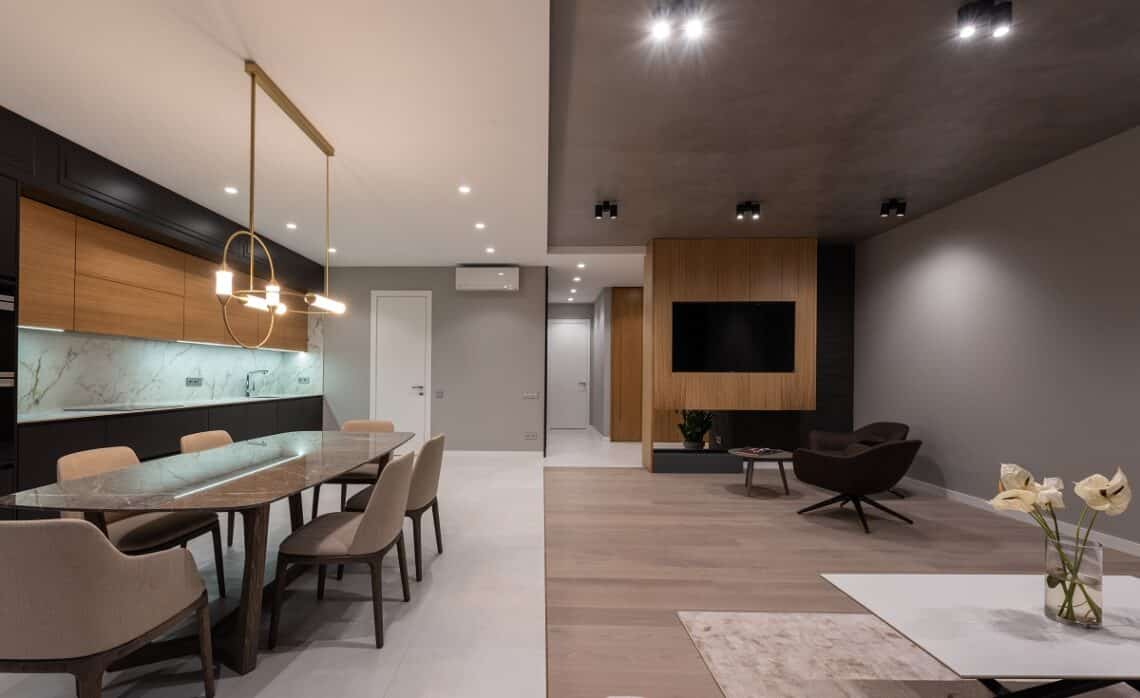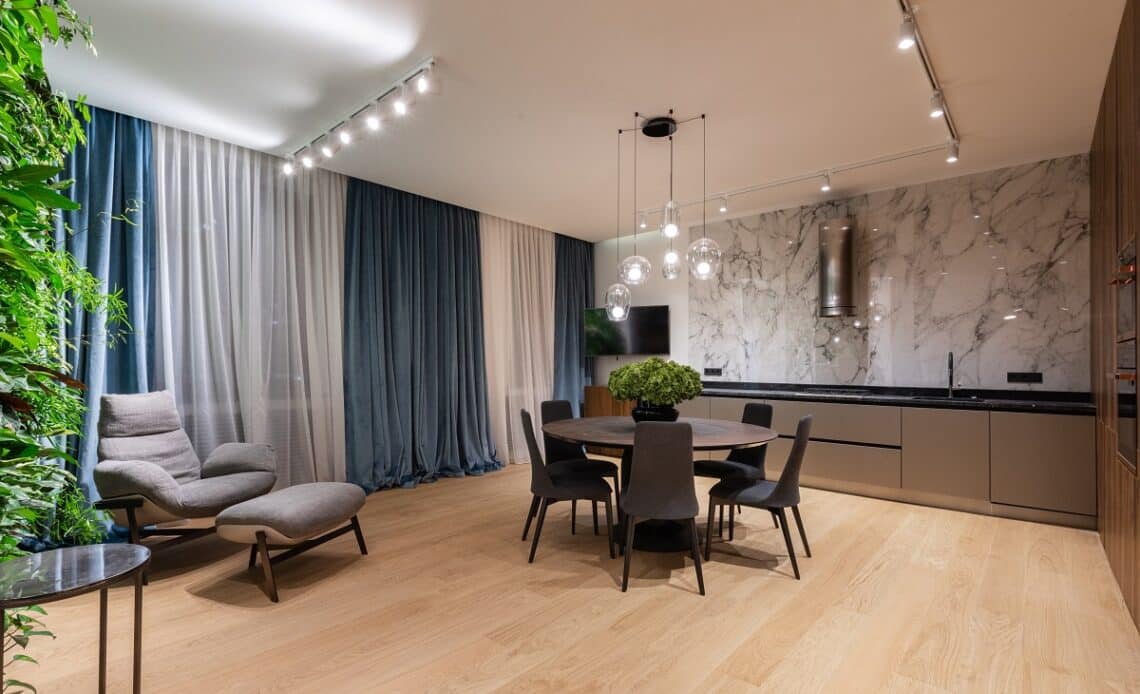Reflected ceiling plans are vital to any building’s construction process. These plans are beneficial to every individual and aspect of the building’s design.
Looking at a ceiling floor plan conveys all the relevant information from electrical and plumbing to the HVAC systems. It is safe to say, without one of these documents, putting together all the systems would be extremely difficult.
If you want to know more about this crucial step in building development, then this guide has all the information you need to know. We will cover what ceiling floor plans are, why they are so important and more.
With that being said, let’s get into it!
What Are Reflected Ceiling Plans?

If you are familiar with building design, then you should know what the concept of a blueprint is. A reflected ceiling plan (RCP) is essentially a blueprint with a see-through approach that conveys more information.
As a concept, the reflected ceiling plan is designed to be seen as a mirror on the floor that reflects the ceiling back up to you. Moreover, the interior ceiling and floor of the building can be observed in the same document.
By having both the ceiling plan and floor plan overlaid on top of each other, a large amount of information can be gathered. Also, there are a number of individuals who work on the floor plan, all adding to the overall design of the room.
As it passes from one department to the other, the design of the room comes together and is drawn up slowly. Architects and interior designers draw up a reflected ceiling plan to better read and gauge the dimensions of the room.
In this way, both the roof and floor area can be used efficiently. What’s more, interior design and other safety features like smoke detectors are planned out on the reflected ceiling plan as well.
Altogether, there are a number of moving parts when reading a floor plan. With every addition to the floor plan, the reflected ceiling plan has another layer of information added to it.
Difference Between A Floor Plan And RCP
Compared to a blueprint, a reflected ceiling plan is just one facet of designing a building. Whereas a blueprint only shows the floor plan of a room, a reflective ceiling plan is a preview of the entire finished floor at once. This is especially useful in residential projects, or an office-reflected ceiling plan, allowing for cohesiveness throughout the building process.
Floor plans show facets of the room that are grounded, such as stairs, doors, windows, and furniture. If floor plans had all of this information, plus wiring and lighting, packed onto one page, it could quickly become impossible to read.
This is why a reflected ceiling plan is so beneficial as it keeps the lighting, mechanical, and engineering drawings separate from the main floor plan. Doing so ensures that the builders can refer between each layout quickly and easily.
Moreover, as reflected ceiling plans showcase both the floor plan and ceiling features at the same time, they are essential in building design. Not to mention, these plans have the same scale and regardless of who is working, they know where everything is meant to be positioned.
Room Design
Ceilings are a valuable piece of real estate in the layout of a room. They can be built up to add space for wiring work and other features to be installed like vents and circuits.
One common strategy is to use a gypsum board to create suspended wallboard on the ceiling. This provides more room when the engineers are designing the electrical work.
Once the builders and architects have drawn up the architectural drawing of the rooms, the rest of the reflected ceiling plan can be put together. Everything from ceiling height to any special features is included such as slopes, insulation, and other unique designs.
Additionally, the specifics of materials and the type of ceiling to be used (suspended, traditional, etc.) are determined. This sets the structural layout with which the other collaborators need to work with.
Electrical And Light Fixtures
After passing the reflected ceiling plan along, electricians and plumbers can add sprinklers, light switches, and other fixtures. The electrical wiring work needs to be adjusted within the walls and under the floor. Also, special venting and mounts for the HVAC system can be laid out.
Furthermore, reflected ceiling plans show the placement of light fixtures, T-bar ceiling patterns, and other electrical components. These electrical drawings help the room come together functionality-wise while remaining within the limits of the space.
Now, safety features like smoke detectors and emergency lighting are other components that are added to the ceiling plans. All these special ceiling features are represented as symbols or letters in the drawing.
Determining exactly what each fixture is within the space is straightforward and easy, with a key that explains the ceiling plan.
Soundproofing Considerations in Ceiling Plans
A comprehensive reflected ceiling plan (RCP) extends beyond indicating the placement of lights and electrical fixtures; it can also entail noise management strategies, a crucial aspect of urban living and shared spaces. These plans should incorporate ceiling soundproofing components, including acoustic ceiling panels and insulation materials, which play an instrumental role in reducing noise transmission.
Acoustic ceiling panels, constructed from sound-absorbing materials such as foam or fibrous materials, capture and convert sound energy into heat, reducing reverberations within the room. On the other hand, insulation materials placed in the ceiling cavity can impede sound waves, curbing the transmission of sound between floors.
Further, some RCPs might include provisions for dropped or suspended ceilings. These designs leave space between the actual ceiling and the secondary one, providing an additional layer of soundproofing.
Creating A Reflected Ceiling Plan
Drawing up a reflected ceiling plan for a project can be done manually by hand or through software to share as an image. Regardless of the method, the process remains the same.
Every reflected floor plan is a collaborative effort between an architect, engineer, and interior designer. As it passes from one department to another, the architectural drawing takes shape.
1. Contractor
Initially, the contractor begins with the idea of what they want their ceiling to look like. These can be a traditional or suspended type which will be specified on the RCP.
2. Architects
Furthermore, the architect of the project will determine what materials are to be used. Factors like whether or not there is any special ceiling treatment necessary or acoustical tile to be placed in the room. The scale and dimensions of the room are also determined by the architect.
Other features of the room, such as the doors, are added by the architect. The direction in which the door swings is also drawn using dotted lines on the plan. This is useful to the engineers to have optimal placement of the lighting switches inaccessible locations.
3. Engineers And Plumbers
Once the space of the floor plans is laid down, it is up to the engineers to add the lights and circuit breaker layout, if necessary, in large rooms.
Engineers are responsible for connecting the light fixtures and circuits to the wall switches. They work in collaboration with interior designers to place these switches in ideal locations.
Additionally, the engineers and architects collaborate in positioning the sprinkler system and HVAC fixtures. Heating and cooling in the room are taken care of in this stage.
Electrical drawings on the reflected ceiling plan include a variety of information. A few examples are the types and positioning of outlets and the number of light fixtures, as well as the voltage for the wiring.
There are extra features that are included in the electrical drawing as well. Direct connections, as well as emergency and security systems, need to be placed and wired in the ceiling plan.
Furthermore, if there is a sound system to be installed or specialized wiring for appliances, then they must be accommodated by the engineer in the reflected ceiling plan.
Commercial projects are often heavily dependent on electrical drawings to have a fully functional building. Permits and drawing up plans are an absolute must before any sort of renovation or construction can be done. Electrical permits, in particular, are necessary even for a minor residential project.
4. Interior Designers
With the basic amenities in place, the reflected floor plan can be passed on to the interior designers to plan out the furniture layout and foot space with the basic amenities in place.
Lighting and electrical outlets are other areas of collaboration between the interior designer and architect. These lighting fixtures need to be connected to the main power source. What’s more, the lights need to be incorporated alongside the wiring of the room.
Having even lighting throughout the room can determine the functionality it has. Making sure the light is distributed to every corner of the room creates a higher quality atmosphere than an uneven one.
Beyond lighting the space, the interior designer tries to maximize the amount of foot space in the room. This is done by carefully choosing furniture that has functionality and complements the dimensions of the house or office.
Every piece in a room is ideally placed with a purpose. In areas that are smaller, the floor plan of real estate is valuable. This makes the role of an interior designer much more challenging. They must work around the confines set by the engineer and architect.
Reading A Reflected Ceiling Plan
Floor plans and reflected ceiling plans are vastly different in their ease of interpretation. Where floor plans have a direct and simple approach to conveying information, and RCP is more complex.
Reflected ceiling plans utilize symbols and scales that mirror the placement and size of features on the ceiling of a room. With a multi-faceted level of information shown at once, the RCP is quickly filled up with features across the room, from lighting to wiring and heating.
Interpreting the reflected ceiling plan is a simple matter if you understand how to go about reading it. There are only two facets to keep in mind while studying an RCP; they are symbols and scale. Combining these two sources of information gives a clear look into the finished room’s design and layout.
Symbols
With many symbols on the reflected ceiling plan, it can be overwhelming to understand what they mean. To make sure these symbols can be interpreted in the simplest way, there is a key provided along with the scale of the RCP.
Refer to this key when looking at the document. Everything from door placement to electrical wiring and materials in the ceiling construction is reflected on the key.
Beyond specifying the location of a particular feature on the reflected ceiling plan, there are other symbols present on the RCP. These symbols can only be understood after knowing the context of the element it is referring to. For example, an engineer can denote supply and return registers with an incoming or outgoing arrow placed above the vent symbol.
Being aware of the context of the symbols can help you decipher the reflected ceiling plan correctly. It is just a matter of referring to the key and matching it to the drawing.
Furthermore, numbers and letters can be used to dictate finishes and furniture as well as fixtures in the ceiling. These unique symbols are determined in the key of the RCP as well.
Additionally, furniture and the orientation of doors are denoted using dotted lines in some reflected ceiling plans. These plans are not a floor reflecting the type of RCP but only show the ceiling plan.
Furniture and doors that are marked with dotted lines show they are located on a lower plane in terms of the orientation of the architectural drawings. This is to help differentiate it from the light fixtures and other features on the ceiling.
Scale
Scale is another crucial facet of reading a reflected ceiling plan. As it is drawn to scale, the ratio of the plan to the actual house or office room is equal and consistent. This is denoted on the bottom of the RCP alongside the key.
Keep in mind that a reflected ceiling plan is not a direct mirror image of a floor plan. Instead, it is a display of the floor and ceiling on the same scale and orientation as each other. They are consistent with each other, allowing for a cohesive construction.

Wrapping Up
Hopefully, you are more aware of what a reflected ceiling plan is and how to read one.
These drawings are an integral piece of building design and construction. For those studying architecture or engineering or who simply want to learn more, these are valuable sources of information.
So, you can practice and get the hang of the various compositions of reflected ceiling plans to become more fluent in the design language. The more exposure you have with an RCP, the easier it will be to understand.
Also, don’t be dismayed by the supposed tidal wave of information thrown at you at once. Just keep it simple and remember the key to understanding an RCP: it is simply a reflection of the ceiling in relation to the floor.
So long as you keep this rule in mind (and with a bit of practice), you’ll be able to understand reflected ceiling plans in no time at all!
Related Links
Things to Know Before Planning to Renovate House
Top 9 Best Rendering Software for Architects This Year
17 Best Landscaping Design Software
How to Install Ceiling Grid Perfectly Using Rotary Laser Level?
What Vaulted Ceilings Are, How to Use Them Properly Today & Inspiration






